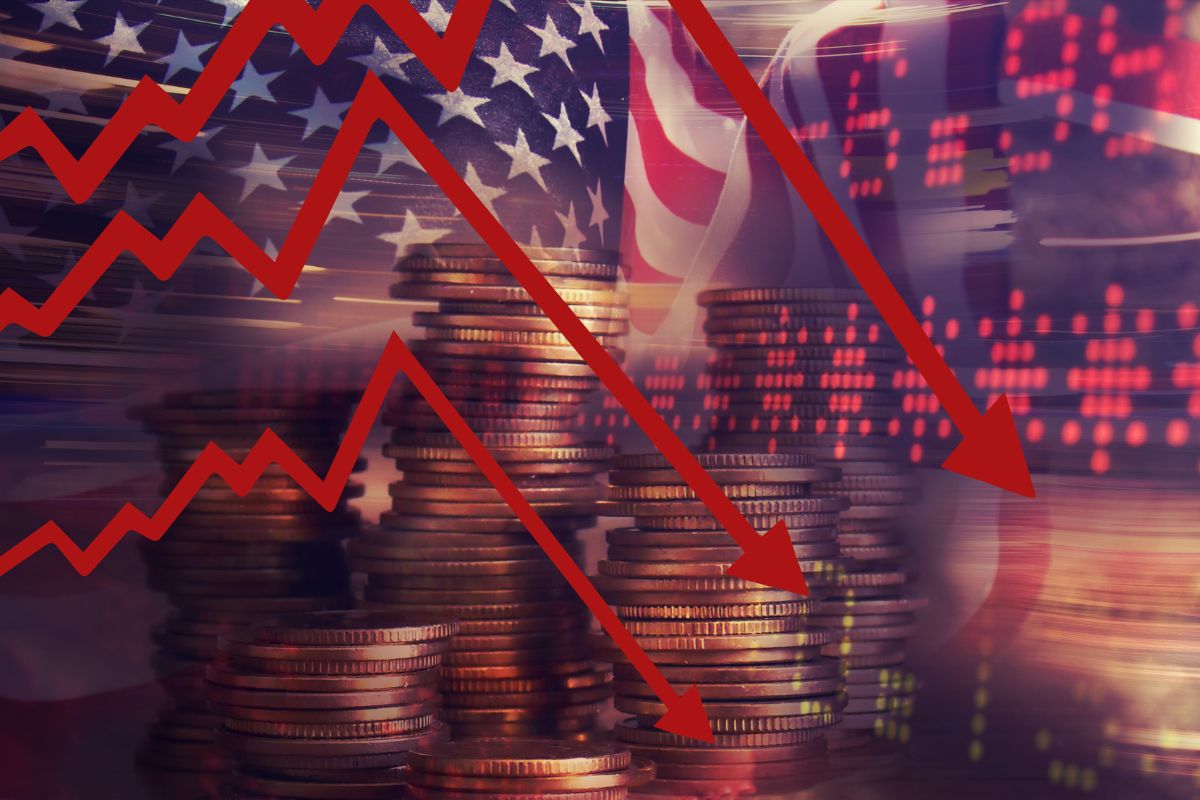Since the Trump Administration announced its new trade policy, global stock markets have suffered significant corrections. A brief geographical overview shows that the main stock exchanges in Asia plummeted again at the start of the week. For example, Tokyo’s Nikkei 225 fell by 7.83%—its worst close since October 2023—while Hong Kong’s Hang Seng dropped by 12.54%. In Europe, markets opened with the same trend: the DAX fell by 6.5%, the CAC 40 by 5.7%, the FTSE 100 by 4.5%, and the IBEX 35 by 5.83%.
“Major U.S. indices continued to fall on Friday after Fed Chair Jerome Powell warned that the economic consequences of the escalating trade war could be worse than expected, further fueling the fears shaking markets. Stock indicators reached their lowest levels since last May: the S&P 500 fell nearly 6%, the Dow plunged 2,230 points, and the Nasdaq lost 5.8%,” according to Mirabaud Wealth Management’s daily market report.
For Hans-Jörg Naumer, Global Director of Capital Markets & Thematic Research at Allianz Global Investors, April began with a global landscape full of developments—and once again, Trump’s tariff policy won’t go unnoticed. “Uncertainty is growing for both the global economy and markets, while tariffs continue to hinder global growth and increase the cost of living for everyone,” he says.
He points out that, according to a Bank of America fund manager survey, the “soft landing” theory remains the most prevalent in markets. “Reality is increasingly challenging this view. Both economic growth and price stability have become more volatile. Furthermore, the drastic shift in U.S. foreign policy has intensified instability in the global order, raising medium-term economic risks. In the U.S., signs of weakness are already appearing. The uncertainty caused by import tariffs is accelerating deglobalization, which could translate into slower global economic growth. At the same time, these tariffs function as a consumption tax, fueling inflation and harming Americans’ purchasing power, as reflected in a sharp decline in consumer confidence.”
According to Carlos Llamas, CEO of EDM, the result of growing political uncertainty has been a very volatile first quarter for equity markets.
“To better understand what has happened, we can summarize the market moves of these three months in two major rotations. First, global investors reduced their exposure to U.S. equities and increased it in Europe, slightly reversing a long-standing underweight. Second, within U.S. equities, there was a rotation from tech companies to more defensive segments, particularly those with more moderate valuations,” Llamas explains.
In the view of Javier Molina, Market Analyst at eToro, this is not just any correction: “Underneath it all is a narrative that few are reading correctly.” He explains that what started as a technical adjustment has morphed into a crisis of confidence. “A crisis that is not being properly managed—neither by central banks nor political leadership. And that’s precisely what should concern us. Trump has raised tariffs abruptly, disorderly, and without a plan. The market has received it for what it is: a historic blunder. The S&P 500 has dropped 10.5% in just two days. And beware—this is not a one-off plunge, but a broad deterioration in expectations. Tech stocks—the very ones that were holding up the indices—are now starting to shed weight. The ‘AI trade’ went too far and is now correcting violently. Credit is beginning to creak. High-yield spreads have spiked, raising many questions about what traders are now pricing in,” Molina argues.
Beyond the Market Decline
Diego Sebastián Albuja, Market Analyst at ATFX LATAM, reminds us that these decisions go beyond politics and have an immediate impact on markets. He notes that the first asset to reflect this is the euro/dollar. “The euro surged nearly 400 pips in a single day—something not seen since the most chaotic moments of the pandemic. In less than a month, the euro/dollar has recovered everything it lost over the past two years. That sends a clear message: something structural has changed. This kind of move is not normal, not technical—it’s economic and political, which makes it even more powerful. Gold has also rallied strongly, while Bitcoin has stalled. All the major currencies we trade daily are being affected,” Albuja points out.
Meanwhile, Carsten Menke, Head of Next Generation Research at Julius Baer, highlights the impact on certain commodities. Specifically, he notes that fears of a U.S. and global recession have dragged down metal commodities.
“Industrial metal prices plummeted on Friday after China retaliated against U.S. ‘Liberation Day’ tariffs. A slowdown in demand was already expected, and the market is now trying to assess the downward consequences following the introduction of trade tariffs, in a period of unprecedented uncertainty. That said, clear signs of stimulus are already emerging in China. Due to its heavy use in industrial applications and the loss of any arbitrage or tariff-related trading opportunities, silver also got caught up in the sell-off. The gold/silver ratio surged past 100, suggesting potential for a silver recovery if a recession is avoided,” he explains.
Understanding the Current Rotation
Leaving aside the recent declines, Nanette Abuhoff Jacobson, Global Investment and Multi-Asset Strategist at Wellington Management, believes the most relevant impact of Trump’s tariffs has been the significant rotation in and out of the U.S., which “has been in full swing, with value outperforming growth and non-U.S. regional returns leading.”
However, Abuhoff clarifies that this rotation has been somewhat unusual, as small-cap stocks haven’t benefited, while defensive sectors like healthcare and consumer staples have. “I suspect allocators are rightly incorporating some defensive exposure into their portfolios through sector and duration positioning,” she notes.
According to her analysis, Europe’s recent outperformance has been driven by extremely negative sentiment, cheap valuations, hopes for an end to the war in Ukraine, and some encouraging signals of potential fiscal expansion. “Now that a ceasefire looks less certain and there are signs that Russia might gain more concessions than Ukraine, I don’t expect Europe’s rally to last long, especially given the higher valuations driven more by multiples than earnings,” she adds.
Finally, she highlights another clear trend in this rotation: China’s comeback. “China, another ‘cheap’ equity market, is experiencing a resurgence as the real estate downturn shows signs of stabilization, President Xi Jinping’s stance toward tech firms becomes more favorable, and more fiscal stimulus could arrive in response to rising U.S. tariffs,” concludes the Wellington Management strategist.




